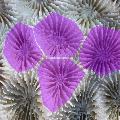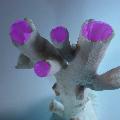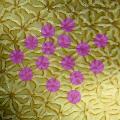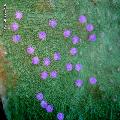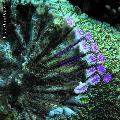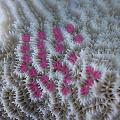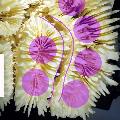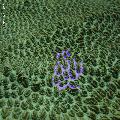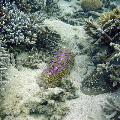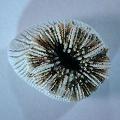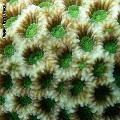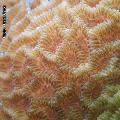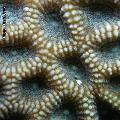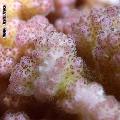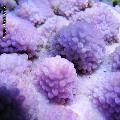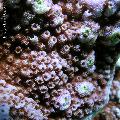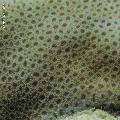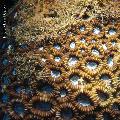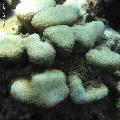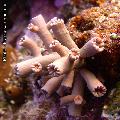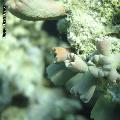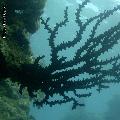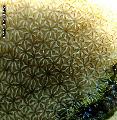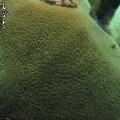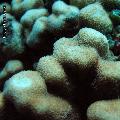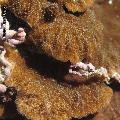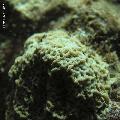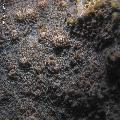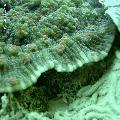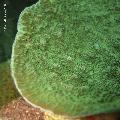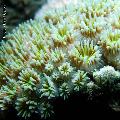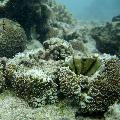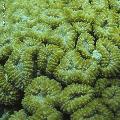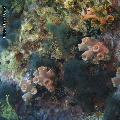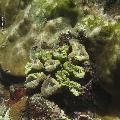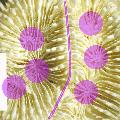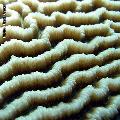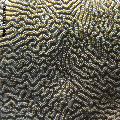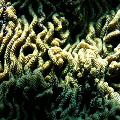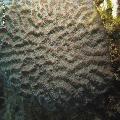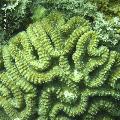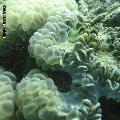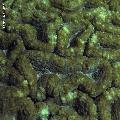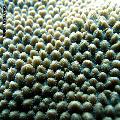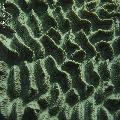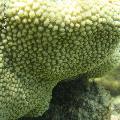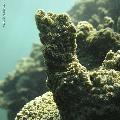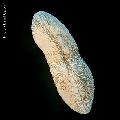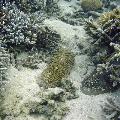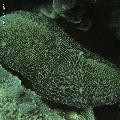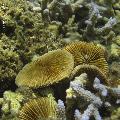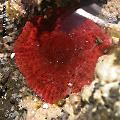Descriptor : Relationship between corallites?
How corallites are arranged?
Click on the different states (in the window states at the bottom left) to see their definitions and illustrations. Read carefully the definitions.
Some colony may include several different states. For example: ploicid and ceriod, phaceloid and flabello-meandroid, ect.
On illustration, mauve calque shows the mouths (corallites)
- cerioid
-
Corallites separated, but with common (adjacent) walls.
The state cerioid (separated and joined corallites) results from fused wall of different corallites. There is no cœnosteum*.
* Cœnosteum: the whole of the skeletal components located between corallites. - plocoid
-
Corallites separated, no common (adjacent) walls.
The different corallites have their own walls separated by common skeleton (cœnosteum*) which is more or less developed and sometimes not easily conspicuous (well developed on the first photo).
* Cœnosteum: the whole of the skeletal components located between corallites. - dendroid
-
Corallites arranged like the branches of a tree.
There is no cœnosteum*.
* Cœnosteum: the whole of the skeletal components located between corallites. - thamnasteroid
-
Corallites separated with a poorly defined wall (wall sometimes not conspicuous), connected by septo-costae* which are organised like a star.
Photo:Pavona pavona
* septo-costae: welding of septa between several monocentric corallites
Septa are vertical calcareous elements displayed hexaradial symmetry (Hexacoralia), which divide corallite cavity into several chambers (multiple of six). - scattered
-
Corallites centers are irregularly distributed on the colony and distance between corallites varies widely.
- phaceloid
-
Corallites separated by no common wall, cœnosteum* is only present at the basis of the wall and therefore not easily conspicuous. Carefull, seen from the front: phaceloid characteristic is rarely visible and can be confused with the state plocoid.
* Cœnosteum: the whole of the skeletal components located between corallites. - meandroid
-
Pluricentric corallites, corallites centers are aligned and limited by a common wall.
Two corallites arrangements can occur in the same colony: plocoid and meandroid as well as cerioid and meandroid (in the last case and for the colony strictly meandroid, there is no cœnosteum*).
* Cœnosteum: the whole of the skeletal components located between corallites. - flabello-meandroid
-
Corallites centers in valleys with no common walls and without cœnosteum*.
Photo: Lobophyllia et plerogyra.
* Cœnosteum: the whole of the skeletal components located between corallites. - hydnophoroid
-
Corallites centers arranged around cœnosteum* ridges or hill.
The common wall that characterizes 'meandroid' breaks in monticules. The valleys containing corallites become discontinuous or network form, it's called 'hydnophoroid structure'.
Photo: Hydnophora
* Cœnosteum: the whole of the skeletal components located between corallites. - fungioid
-
Corallites centers are irregularly or regulary distributed on the colony and linked by septa elements. Sometimes some corallites centers are gathered in central dimple.
The wall is present but invisible on the higher face of the colony, and only visible on the lower face. - not applicable
-
For this case, Scleractinian is solitary (one individual and not a colony of several individuals) with only one corallite.
The value of the arrangement of corallites is therefore not appreciable, it is 'not applicable'.
Here: Heterocyathus et Fungia
